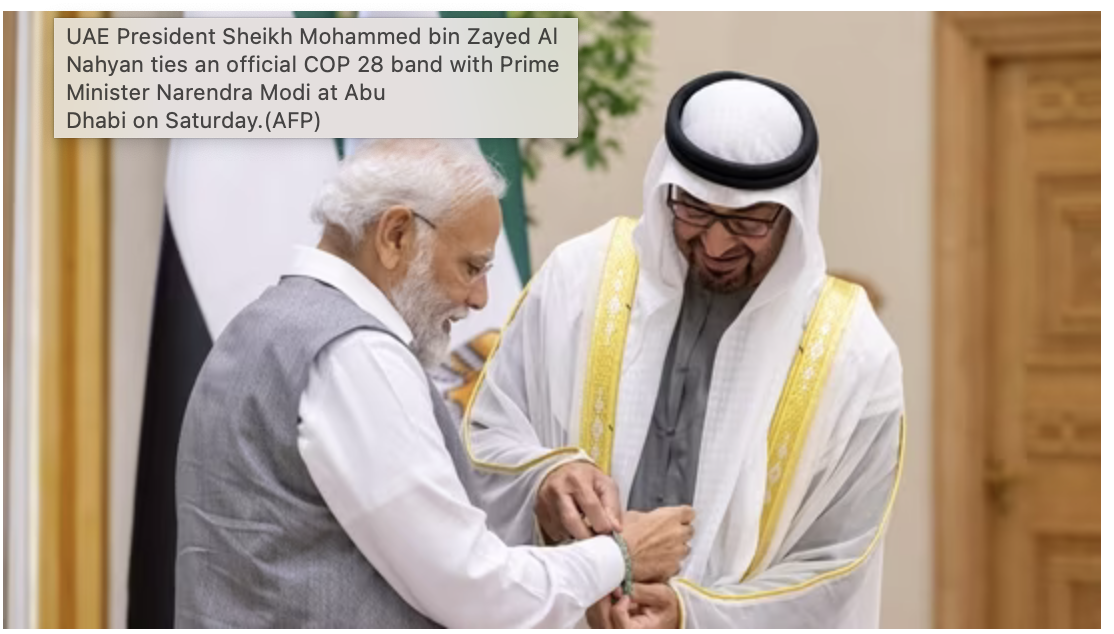The UAE is a significant source of foreign investment for India, crucial for India’s strategic position and shaping the emerging Asian order.

New Delhi July 19 : Prime Minister Narendra Modi’s recent engagement with the United Arab Emirates (UAE) has forged a robust strategic partnership between the two nations. Minilateral formats such as the I2U2 (India-Israel-US-UAE), the India-France-UAE trilateral partnership, and the signing of the Comprehensive Economic Partnership Agreement (CEPA) have positioned the kingdom as a pivotal partner in India’s rise, both economically and geopolitically. The UAE has a crucial role in supporting India’s political aspirations by showcasing solidarity on global matters such as counterterrorism, regional stability, and climate change. The strategic partnership reciprocally benefits the UAE by bolstering its position beyond West Asia, and expanding its influence in the Indo-Pacific and broadly Asia. Abu Dhabi strives to elevate its global profile and establish itself as a prominent hub at the centre of Asia. India, strategically located between the Indo-Pacific and Indo-Abrahamic West Asia, is assuming a crucial role in shaping the emerging Asian order. In this context, India’s relationship with the UAE, Egypt, and Saudi Arabia is of fundamental importance to New Delhi’s strategic position.
The strategic alignment between the UAE and India stems from their shared vision of regional stability, economic growth, and technological advancement. During Modi’s visit to Abu Dhabi, he highlighted key areas for collaboration, including energy, food security, and defence. The two countries signed a memorandum of understanding (MoU) between the Reserve Bank of India and the Central Bank of UAE to enhance transaction integration between the two countries by encouraging the use of local currencies (rupee and dirham) for cross-border transactions and establishing mutual acceptance of domestic card schemes.
At the core of the partnership lies I2U2. While the surface-level agenda focuses on economic and technological cooperation, this format symbolises the merging of the Middle East and South Asia into West Asia. The geostrategic rationale behind I2U2 is to restore a balance of power in West Asia. In the short term, the aim should be to expand the partnership to include Egypt, Saudi Arabia, and other Arab Gulf states and, in the long term, potentially involve France, Greece, and Italy. This would enable the United States to shift its role to that of an offshore balancer in West Asia and pivot to the Indo-Pacific while preventing a power vacuum for Beijing and Moscow. As a result, New Delhi and Washington would emerge as key strategic partners in the littoral states of Eurasia.
In the Indo-Pacific, the India-France-UAE trilateral has elevated strategic collaboration between these nations by focusing on renewable energy, infrastructure development, defence cooperation, and maritime security. France, the UAE, and India are strengthening their ties in the Indian Ocean. Recognising the economic significance of the Indian Ocean and its role in shaping the balance of power in Asia, the three nations are actively linking West Asia with the Indo-Pacific. France has established itself as a strategic partner for India, providing advanced military equipment and technology transfers. The UAE has also enhanced its defence cooperation with France and deepened its strategic partnership with India. This trilateral partnership reflects Abu Dhabi’s aspiration to project its power beyond West Asia into the Indo-Pacific. These efforts contribute to a network of coalitions in the Indo-Pacific – such as the Quad, Aukus, the France-India-Australia trilateral – and the Australia-India-Indonesia trilateral, aiming to manage the global disorder during the transition from Pax Americana to a multipolar order.
The UAE stands as one of India’s largest trading partners and a significant source of foreign direct investment. Bilateral trade has experienced substantial growth, with sectors such as energy, infrastructure, technology, and tourism driving economic ties. CEPA encompasses various aspects of economic partnership, providing a framework for enhanced trade, investment, and cooperation.
The proactive engagement of Modi with the UAE has resulted in a strong partnership between the two nations. The I2U2 Forum, the India-France-UAE trilateral, and CEPA exemplify the multifaceted nature of this strategic partnership. As India continues its economic and political ascent, the UAE’s role in facilitating and supporting this progress is undeniably vital. The convergence of interests and cooperation between India and the UAE aims to foster regional stability, promote economic integration between South Asia and the Middle East, and establish shared positions on the global stage in this era of global disorder.




COMMENTS